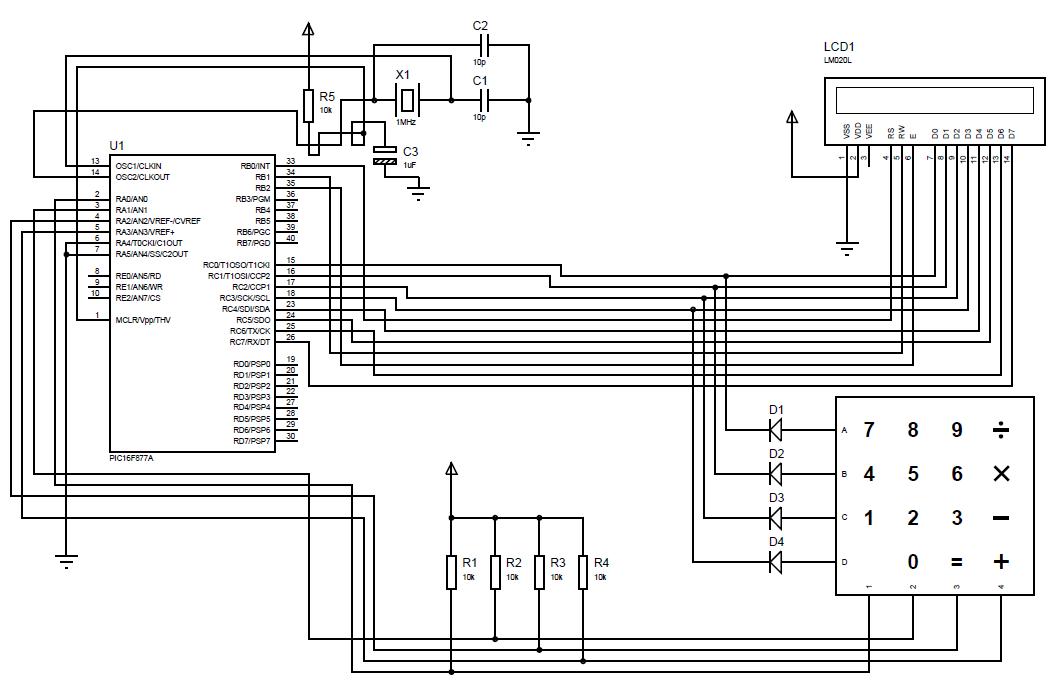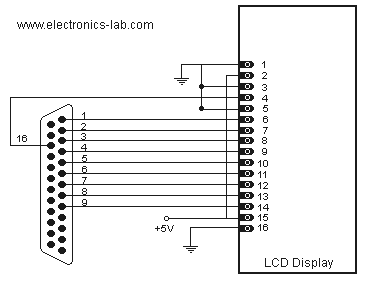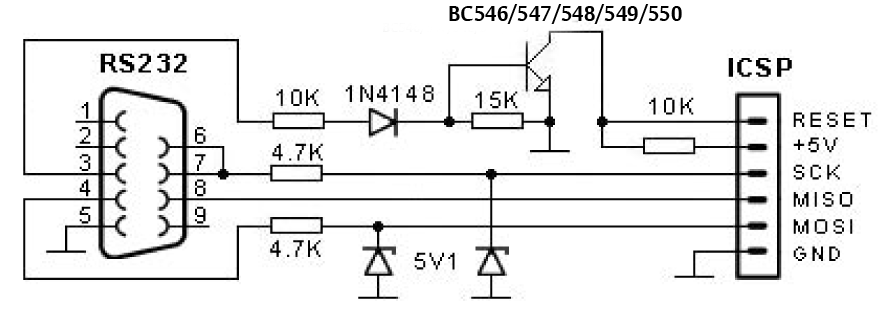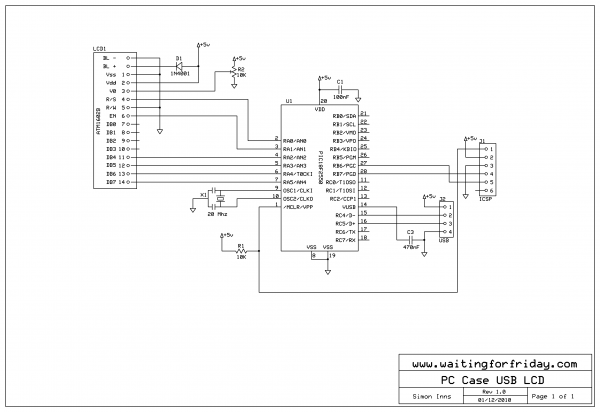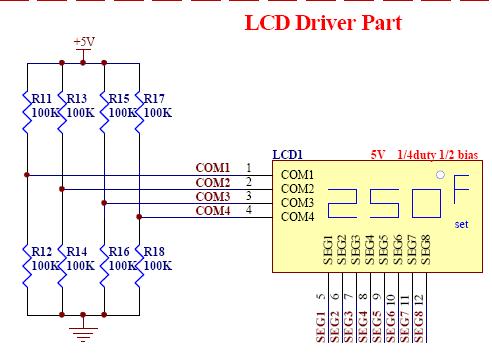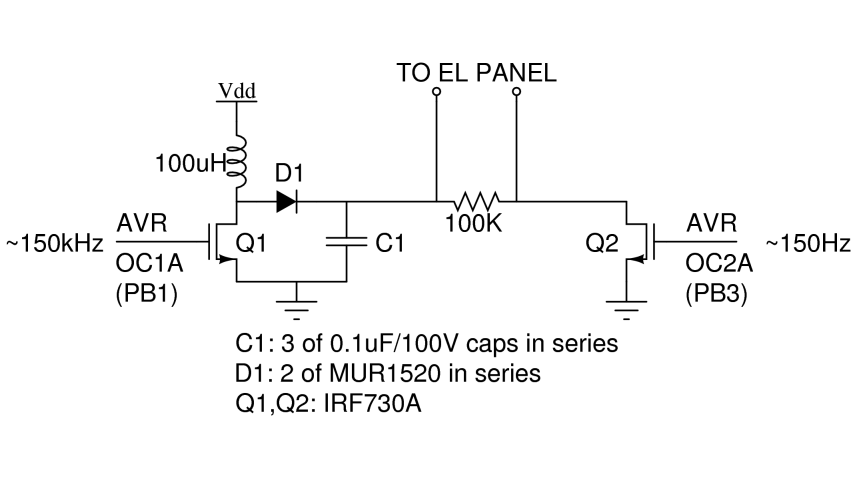
Serial LCD Library

This project utilizes a standard Hitachi HD44780 (or compatible) controller chip to operate an LCD display using only two wires. Various shapes and sizes are available, including standard line lengths of 8, 16, 20, 24, 32, and 40 characters in one, two, or four-line configurations. Traditionally, these LCDs required a minimum of four data wires and two control wires. However, this project enables communication with the LCD using just two wires. The program SerialLcdExample is implemented with the libSerialLCD library. It begins by initializing the Serial LCD on PortB, using pins 0 and 1. The program then clears the LCD and outputs the text "Serial LCD Test" on the first line and "riecktron.co.za" on the second line.
This project leverages the capabilities of the Hitachi HD44780 controller to simplify the wiring requirements for interfacing with LCD displays. By reducing the number of necessary connections to just two data wires, the design enhances flexibility and minimizes complexity in circuit design. The use of the libSerialLCD library streamlines communication by providing a set of predefined commands for initializing the LCD and sending data to be displayed.
The initialization sequence is crucial for ensuring that the LCD is set up correctly before any data is sent. The SerialLCD_Init function is called with parameters specifying the port and the pins used for communication. The commands sent to the LCD, such as SerialLCD_Cmd(_LCD_Clear), ensure that the display is ready for new information by clearing any previous content. The subsequent output commands, SerialLCD_Out, are responsible for displaying specific strings at designated positions on the LCD, allowing for organized and clear information presentation.
In practical applications, this approach is particularly beneficial in environments where space and wiring complexity are concerns. It is suitable for projects ranging from simple user interfaces to more complex systems requiring visual feedback. The versatility in character lengths and line configurations allows for a wide variety of display options, accommodating different project requirements while maintaining ease of use and implementation.This project can be used with a standard Hitachi HD44780 (or compatible) controller chip to control it through only 2 wires. There is a variety of shapes and sizes available. Line lengths of 8, 16, 20, 24, 32 and 40 characters are all standard, in one, two or four-line versions.
The problem was that these LCDs required at least 4 data wires and 2 control wires. With this project you can communicate with the LCD through only 2 wires. program SerialLcdExample; uses libSerialLCD; begin SerialLCD_Init(PortB, 0, 1); SerialLCD_Cmd(_LCD_Clear); SerialLCD_Out(1, 1, `Serial LCD Test`); SerialLCD_Out(2, 2, `riecktron. co. za`); end. 🔗 External reference
This project leverages the capabilities of the Hitachi HD44780 controller to simplify the wiring requirements for interfacing with LCD displays. By reducing the number of necessary connections to just two data wires, the design enhances flexibility and minimizes complexity in circuit design. The use of the libSerialLCD library streamlines communication by providing a set of predefined commands for initializing the LCD and sending data to be displayed.
The initialization sequence is crucial for ensuring that the LCD is set up correctly before any data is sent. The SerialLCD_Init function is called with parameters specifying the port and the pins used for communication. The commands sent to the LCD, such as SerialLCD_Cmd(_LCD_Clear), ensure that the display is ready for new information by clearing any previous content. The subsequent output commands, SerialLCD_Out, are responsible for displaying specific strings at designated positions on the LCD, allowing for organized and clear information presentation.
In practical applications, this approach is particularly beneficial in environments where space and wiring complexity are concerns. It is suitable for projects ranging from simple user interfaces to more complex systems requiring visual feedback. The versatility in character lengths and line configurations allows for a wide variety of display options, accommodating different project requirements while maintaining ease of use and implementation.This project can be used with a standard Hitachi HD44780 (or compatible) controller chip to control it through only 2 wires. There is a variety of shapes and sizes available. Line lengths of 8, 16, 20, 24, 32 and 40 characters are all standard, in one, two or four-line versions.
The problem was that these LCDs required at least 4 data wires and 2 control wires. With this project you can communicate with the LCD through only 2 wires. program SerialLcdExample; uses libSerialLCD; begin SerialLCD_Init(PortB, 0, 1); SerialLCD_Cmd(_LCD_Clear); SerialLCD_Out(1, 1, `Serial LCD Test`); SerialLCD_Out(2, 2, `riecktron. co. za`); end. 🔗 External reference
